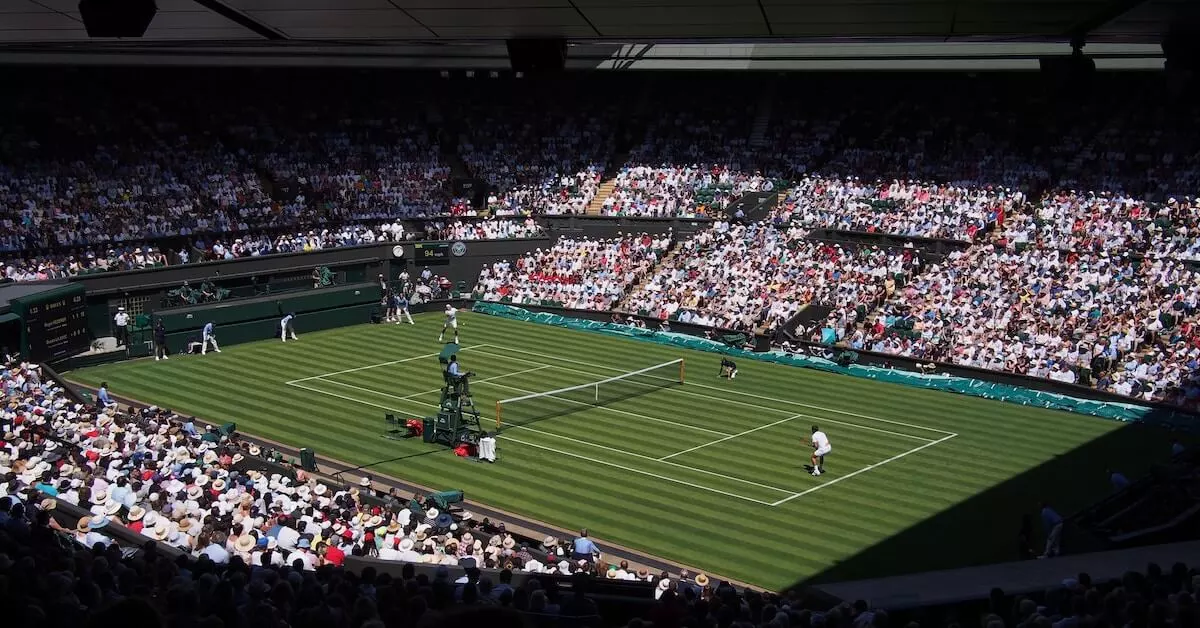If you’re a tennis fan, you know that tennis tournaments are an essential part of the sport. But did you know that there are different types of tennis tournaments? From Grand Slams to ATP and WTA Tours, each tournament has its unique rules, structure, and ranking system. In this article, we’ll explore the different types of tennis tournaments and how they work.
Tennis has a long and rich history, and tournaments have been around for almost as long as the sport itself. The first tennis tournament was held in 1877, and since then, the sport has grown in popularity, with tournaments being held all over the world. Today, tennis tournaments are a crucial part of the sport, with players competing for prize money, ranking points, and the coveted Grand Slam titles.
Understanding the different types of tennis tournaments is essential for any tennis fan. Whether you’re a casual spectator or an avid player, knowing the rules and structure of each tournament can enhance your enjoyment of the sport. So, let’s dive in and explore the different types of tennis tournaments and how they work.
Understanding Tennis Tournaments
Tennis tournaments are competitions where professional tennis players compete against each other for prizes and rankings. There are different types of tennis tournaments, including Grand Slam tournaments, ATP Tour, WTA Tour, and ITF tournaments. Each of these tournaments has its own rules, regulations, and ranking systems.
ATP Tour and WTA Tour
The ATP Tour and the WTA Tour are the two main professional circuits for men’s and women’s tennis, respectively. These tours consist of events held throughout the year, with players earning points based on their performance. The top players compete on the ATP and WTA tours, and the tournaments are among the most prestigious.
The ATP Tour includes ATP 250, ATP 500, and ATP Masters 1000 events, with the categories denoting the number of Pepperstone ATP Rankings points awarded to the champion. Grand Slams award 2,000 points to the winner. The WTA Tour includes 250, 500, and 1000-level events, with Grand Slams also awarding 2,000 points to the winner.
Grand Slam Tournaments
Grand Slam tournaments are the most prestigious tennis tournaments in the world. There are four Grand Slam tournaments: the Australian Open, the French Open, Wimbledon, and the US Open. These tournaments are held annually and offer the most ranking points to the winners.
Grand Slam tournaments have a unique format, with players competing in a single-elimination draw. The draw consists of 128 players, with the top 32 players seeded and placed in different sections of the draw. The remaining 96 players are drawn at random and placed in the draw. The winner of each match advances to the next round until there is only one player left standing.
ITF Tournaments
The International Tennis Federation (ITF) organizes tournaments for players who are not part of the ATP or WTA tours. These tournaments are held throughout the year and offer players the opportunity to earn ranking points and improve their rankings.
ITF tournaments are divided into different categories, including ITF Futures, ITF World Tennis Tour, and ITF Women’s World Tennis Tour. These tournaments have different prize money and ranking points, with the higher-level tournaments offering more of both.
Types of Tennis Tournaments
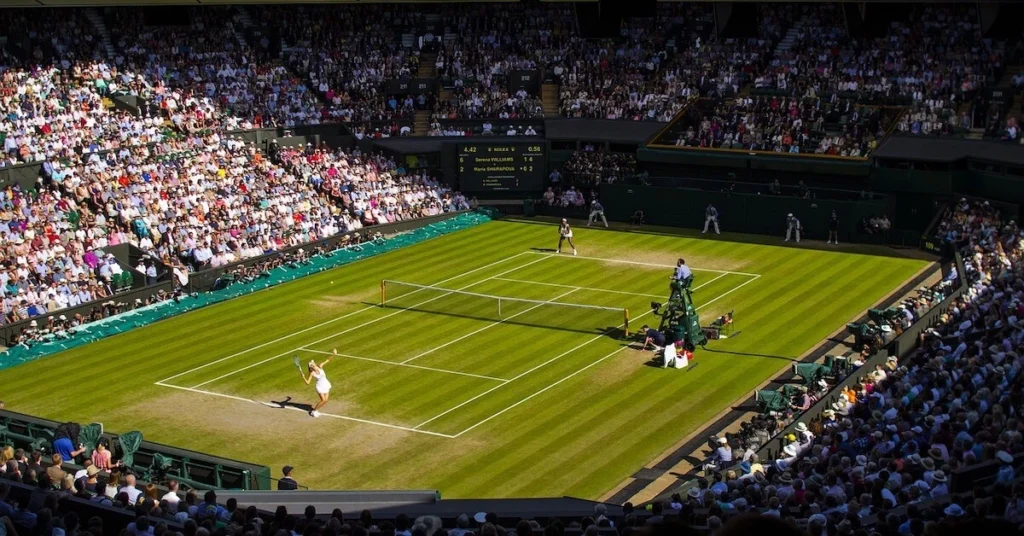
Tennis tournaments are classified based on various factors such as the level of competition, prize money, ranking points, and surface type. Here are the different types of tennis tournaments:
Grand Slam Tournaments
The Grand Slam tournaments are the most prestigious events in tennis. They are held four times a year and are also known as the majors. The four Grand Slam tournaments are the Australian Open, French Open, Wimbledon, and US Open. These tournaments offer the highest prize money and ranking points. The winner of a Grand Slam tournament is awarded 2000 ranking points, which is the highest number of points that can be earned in a single tournament.
ATP Tour Tournaments
The ATP Tour is the main professional men’s tennis circuit. It consists of four levels of tournaments – ATP 250, ATP 500, ATP Masters 1000, and the Grand Slams. The ATP 250 tournaments offer the lowest prize money and ranking points, while the ATP Masters 1000 tournaments offer the highest prize money and ranking points after the Grand Slams. The winner of an ATP Masters 1000 tournament is awarded 1000 ranking points.
Challenger Tour Tournaments
The Challenger Tour tournaments are the second-highest level of competition in men’s tennis after the ATP Tour. These tournaments are managed by the ATP and serve as a transition from the ITF Tour to the ATP Tour. The Challenger tournaments offer lower prize money and ranking points compared to the ATP Tour tournaments, but they provide players with an opportunity to gain valuable experience and improve their rankings. The winner of a Challenger tournament is awarded 125 ranking points.
Davis Cup
The Davis Cup is an international team competition in men’s tennis. It is organized by the International Tennis Federation (ITF) and is contested by teams from different countries. The Davis Cup is held annually and consists of several rounds of matches played in a knockout format. The winning team is awarded the Davis Cup trophy.
The Grand Slam Tournaments
The Grand Slam tournaments are the most prestigious events in the world of tennis. They are the four major annual tournaments that are considered the most important and prestigious events in the sport. The Grand Slam tournaments are the Australian Open, French Open, Wimbledon, and the US Open.
Each of these tournaments is played over two weeks and attracts the best players from around the world. The Grand Slam tournaments are played on different surfaces, with the Australian Open being played on hard courts, the French Open on clay courts, Wimbledon on grass courts, and the US Open on hard courts.
The Grand Slam tournaments are the most difficult to win, as they require players to win seven consecutive matches to claim the title. The winner of a Grand Slam tournament is awarded 2,000 ranking points, which is the highest number of points awarded for any tennis event.
Wimbledon is the oldest and most prestigious of the Grand Slam tournaments. It is played annually in late June and early July at the All England Lawn Tennis and Croquet Club in London, England. The tournament is known for its traditional dress code, which requires players to wear all-white clothing.
The Australian Open is held annually in Melbourne, Australia, in January. The tournament is played on hard courts and is known for its hot weather conditions, which can make playing conditions challenging for the players.
The French Open, also known as the French Championships, is held annually in Paris, France, in late May and early June. The tournament is played on clay courts, which are slower than other surfaces, making it more difficult for players to hit winners.
The US Open is held annually in New York, USA, in late August and early September. The tournament is played on hard courts and is known for its lively atmosphere, with fans often cheering loudly for their favorite players.
Tournament Structures and Formats
Tennis tournaments come in various formats and structures, each with its own unique rules and regulations. Understanding these different formats is crucial for players and fans alike. Here are some of the most common tournament structures and formats you may encounter:
Singles and Doubles
Tennis tournaments can be played in either singles or doubles format. Singles is a one-on-one match between two players, while doubles is played with two players on each side of the court. Doubles tournaments can be further divided into men’s, women’s, and mixed doubles.
Main Draw and Qualifying Draw
Most major tournaments have a main draw and a qualifying draw. The main draw consists of the top-ranked players who are automatically entered into the tournament based on their ranking. The qualifying draw is a separate tournament that takes place before the main draw and is open to lower-ranked players who must win a series of matches to earn a spot in the main draw.
Round-Robin
In a round-robin tournament, players are divided into groups and play against each other in a series of matches. The player with the best record in each group advances to the next round. This format is often used in the early stages of a tournament to determine which players will advance to the knockout rounds.
Draw Size
The draw size of a tournament refers to the number of players or teams in the tournament. Smaller tournaments may have draws of 16 or 32 players, while larger tournaments can have draws of 128 or more. The larger the draw size, the more matches a player must win to advance to the final.
Wild Card
A wild card is a special entry into a tournament that is given to a player who may not have qualified based on their ranking. Wild cards are often given to up-and-coming players or local favorites to help boost attendance and interest in the tournament.
Tennis Tournament Rules
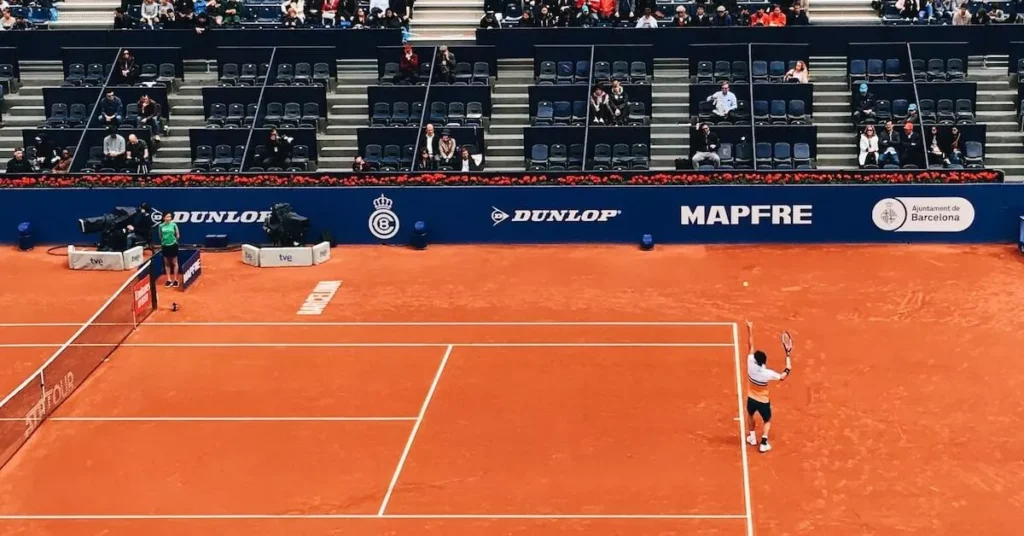
When it comes to tennis tournaments, there are certain rules that players must abide by. These rules are put in place to ensure fair play and consistent standards across all tournaments. In this section, we will discuss some of the basic rules that govern tennis tournaments.
Scoring
In tennis, scoring is based on a point system. Each game consists of four points, and the first player to win four points wins the game. However, if the score is tied at 3-3, the game goes into a deuce, where the first player to win two consecutive points wins the game. A set is won by the player who wins six games, with a margin of at least two games. If the score is tied at 6-6, a tiebreaker is played to determine the winner of the set.
Code of Conduct
Players are expected to adhere to a code of conduct during tennis tournaments. This includes treating opponents, officials, and spectators with respect, refraining from unsportsmanlike conduct, and avoiding the use of foul language. Failure to adhere to the code of conduct can result in penalties, including fines and disqualification from the tournament.
Officials
Tennis tournaments are overseen by a team of officials, including umpires, line judges, and ball boys/girls. The umpire is responsible for enforcing the rules of the game and making calls on disputed points. Line judges are responsible for determining whether a ball is in or out of play, while ball boys/girls retrieve balls that go out of play and provide towels and water to players during breaks.
Tennis Terms
There are many terms used in tennis that players should be familiar with. Some of the most common terms include:
- Ace: A serve that is not touched by the opponent and lands inside the service box.
- Deuce: A tied score of 40-40, which requires two consecutive points to win the game.
- Love: A score of zero.
- Match point: The point that a player needs to win the match.
- Rally: A sequence of back-and-forth shots between players.
Ranking and Points Distribution
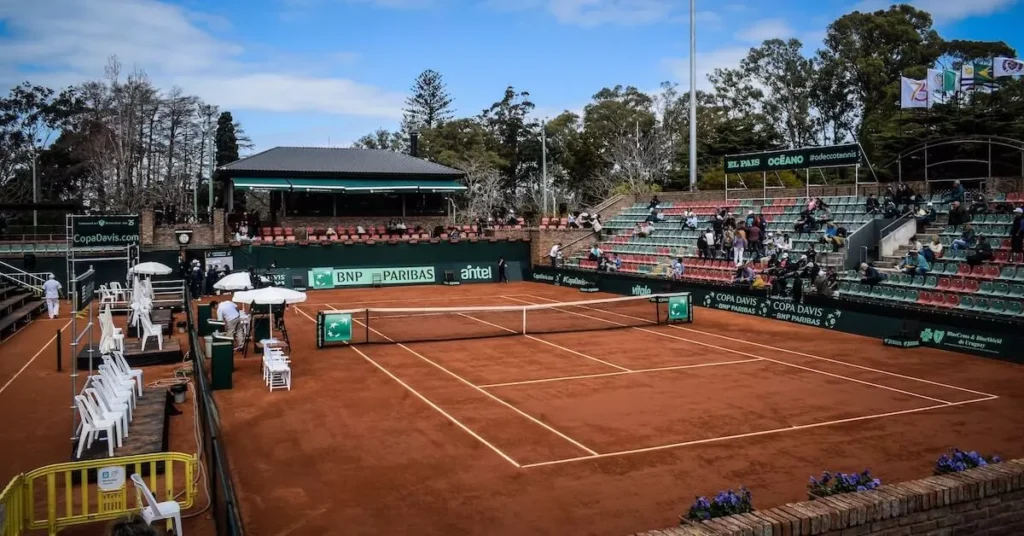
Tennis players are ranked based on their performance in tournaments. The ranking system is used to determine the highest-ranked players and the lower-ranked players. The ranking system is also used to determine the standing of players in tournaments.
Ranking points are awarded based on a player’s performance in a tournament. The points distribution varies depending on the type of tournament. Grand Slam tournaments, for example, award the most points, while smaller tournaments award fewer points.
The ATP and WTA rankings are updated weekly, and players can earn or lose ranking points based on their performance in tournaments. The rankings are used to determine the seeding of players in tournaments, which can have a significant impact on a player’s chances of winning.
Here is a breakdown of the points distribution for different types of tournaments:
Grand Slam Tournaments
Grand Slam tournaments are the most prestigious tournaments in tennis, and they award the most ranking points. The winner of a Grand Slam tournament earns 2000 points, while the runner-up earns 1200 points. The points distribution for Grand Slam tournaments is as follows:
| Round | Points |
|---|---|
| Winner | 2000 |
| Runner-up | 1200 |
| Semifinalist | 720 |
| Quarterfinalist | 360 |
| Round of 16 | 180 |
| Round of 32 | 90 |
| Round of 64 | 45 |
| Qualifier | 25 |
ATP Masters 1000 Tournaments
ATP Masters 1000 tournaments are the next level of tournaments after Grand Slams, and they award a significant number of ranking points. The winner of an ATP Masters 1000 tournament earns 1000 points, while the runner-up earns 600 points. The points distribution for ATP Masters 1000 tournaments is as follows:
| Round | Points |
|---|---|
| Winner | 1000 |
| Runner-up | 600 |
| Semifinalist | 360 |
| Quarterfinalist | 180 |
| Round of 16 | 90 |
| Round of 32 | 45 |
ATP 500 Tournaments
ATP 500 tournaments are the next level of tournaments after ATP Masters 1000 tournaments, and they award fewer ranking points. The winner of an ATP 500 tournament earns 500 points, while the runner-up earns 300 points. The points distribution for ATP 500 tournaments is as follows:
| Round | Points |
|---|---|
| Winner | 500 |
| Runner-up | 300 |
| Semifinalist | 180 |
| Quarterfinalist | 90 |
| Round of 16 | 45 |
ATP 250 Tournaments
ATP 250 tournaments are the smallest level of tournaments, and they award the fewest ranking points. The winner of an ATP 250 tournament earns 250 points, while the runner-up earns 150 points. The points distribution for ATP 250 tournaments is as follows:
| Round | Points |
|---|---|
| Winner | 250 |
| Runner-up | 150 |
| Semifinalist | 90 |
| Quarterfinalist | 45 |
| Round of 16 | 20 |
The ranking system is an essential part of tennis, and it is used to determine the standing of players in tournaments. The points distribution varies depending on the type of tournament, and players can earn or lose ranking points based on their performance.
Player Participation and Training
When it comes to tennis tournaments, player participation is a key factor. Tournaments can be classified based on the level of play and the ranking points awarded. For instance, ATP and WTA tours are the two main professional circuits for men’s and women’s tennis, respectively, where players earn points based on their performance. The top players compete on these tours, and the tournaments are among the most prestigious.
To prepare for tournaments, players undergo extensive training and practice. This includes working with coaches to improve their technique and strategy. Recovery is also an important aspect of training, as players need to rest and allow their bodies to heal after intense workouts and matches.
Inflammation and swelling are common issues that players face, especially after long matches or training sessions. To address these issues, players may use ice baths or other forms of cold therapy to reduce inflammation and promote recovery.
Prize Money and Earnings
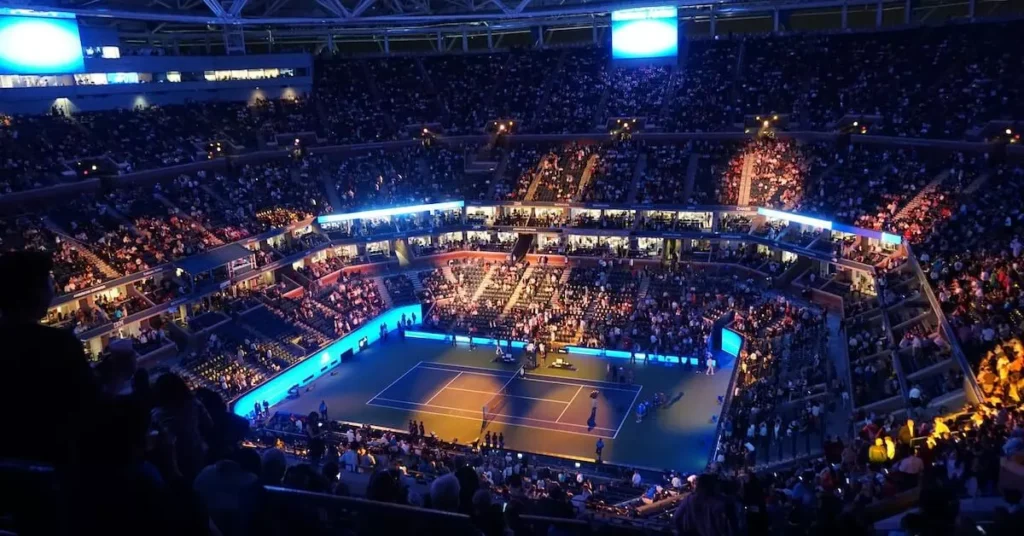
One of the biggest draws of tennis tournaments is the prize money on offer. The amount of prize money varies depending on the tournament, with Grand Slam events offering the most significant payouts.
In 2023, the total prize money for the Australian Open is expected to be around AUD 71 million, with the men’s and women’s singles champions taking home AUD 4.5 million each. The French Open offers a total prize pool of around EUR 48 million, with the singles champions receiving EUR 2.8 million each. Wimbledon has a total prize pool of around GBP 48 million, with the singles champions receiving GBP 2.8 million each. The US Open offers a total prize pool of around USD 57 million, with the singles champions receiving USD 4.5 million each.
It’s not just the winners who receive prize money, though. Players who make it to the later rounds of the tournament also receive a portion of the prize pool, with the amount decreasing the further down the rankings you go. For example, at the Australian Open, players who lose in the first round of the singles competition receive AUD 100,000, while players who make it to the second round receive AUD 150,000.
In addition to prize money, players can also earn money through sponsorships and endorsements. Top players like Roger Federer and Serena Williams can earn millions of dollars each year through these deals.
It’s worth noting that prize money and earnings can vary depending on a player’s gender. While the Grand Slam tournaments offer equal prize money for men and women, other tournaments may not. For example, the BNP Paribas Open in Indian Wells offers a total prize pool of USD 17 million, but the men’s champion receives USD 1.175 million while the women’s champion receives USD 1.3 million.
Broadcasting and Media Coverage
Tennis tournaments are some of the most widely broadcasted sporting events in the world. Television networks such as NBC Sports in the United States, Eurosport in Europe, and ESPN in Latin America and Asia, among others, provide extensive coverage of the tournaments. Broadcasting rights for tennis tournaments are often sold to the highest bidder, which means that the tournaments’ popularity and prestige play a significant role in the amount of coverage they receive.
In addition to traditional television broadcasts, tennis tournaments are also covered extensively by online media, including blogs, websites, and social media platforms. These platforms provide fans with real-time updates, scores, and highlights, making it easier for them to keep up with their favorite players and matches.
The media coverage of tennis tournaments is not limited to the matches themselves. The tournaments’ off-court activities, such as press conferences, player interviews, and sponsor events, are also covered by the media. These activities provide fans with an insight into the players’ lives and personalities, making them feel more connected to the sport and its players.
Tennis Tournaments Around the World
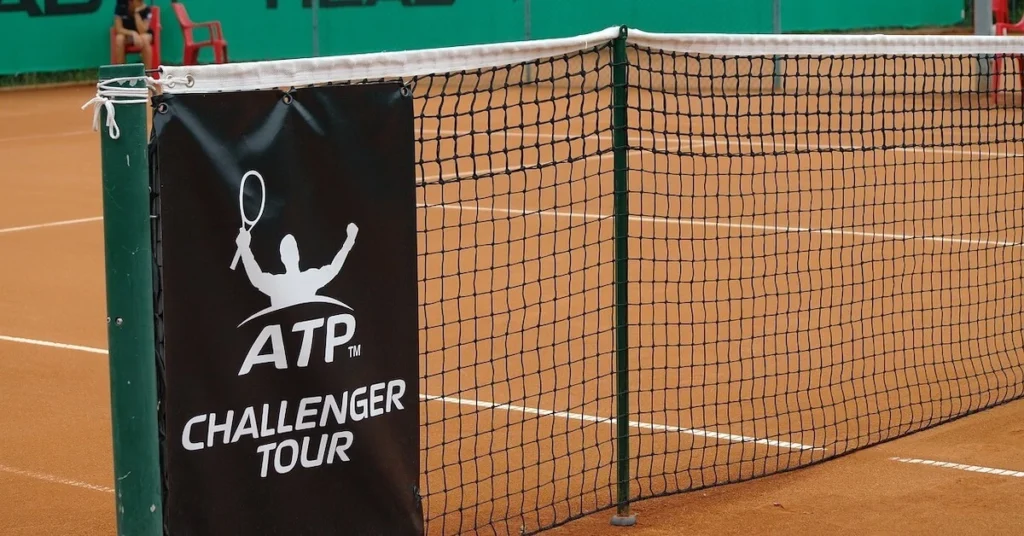
Tennis is a global sport, with tournaments taking place all over the world. From the biggest international competitions to smaller local events, there are a variety of tennis tournaments available for any tennis player to participate in.
One of the most famous tennis tournaments in the world is Wimbledon, held annually in London, England. This tournament is one of the four Grand Slam events and is played on grass courts. Another Grand Slam event is the French Open, held in Paris, France, which is played on clay courts.
In addition to the Grand Slam events, there are also a number of other high-profile tournaments around the world. For example, the ATP Finals is a tournament held at the end of each year, featuring the top eight men’s singles players and doubles teams. This tournament is held in a different city each year, with recent locations including London, Tokyo, and Turin.
Many cities around the world also host smaller tournaments throughout the year, such as the Miami Open in Miami, Florida, or the Shanghai Masters in Shanghai, China. These tournaments are often part of the ATP Tour or the WTA Tour, which are professional tennis tours for men and women, respectively.
If you’re looking for a tennis destination, there are a number of options to choose from. One popular destination is the Newport Casino in Newport, Rhode Island, which is home to the International Tennis Hall of Fame and hosts the annual Hall of Fame Open tournament. Another option is the Monte-Carlo Country Club in Monaco, which hosts the Monte-Carlo Masters tournament each year.
Impact of Tennis Tournaments
Tennis tournaments have a significant impact on the sport of tennis, the players, and the local communities. Here are some of the ways in which tennis tournaments impact these entities:
Performance
Tennis tournaments provide players with the opportunity to showcase their skills and compete against the best players in the world. Winning a tournament can significantly improve a player’s ranking and increase their chances of being invited to future tournaments. Additionally, the prize money awarded to winners and top performers can be substantial, providing financial incentives for players to perform at their best.
Professional Tennis
Tennis tournaments are the lifeblood of professional tennis. Without tournaments, there would be no professional tennis tour, and players would not have the opportunity to earn a living playing the sport they love. Tournaments also provide exposure for sponsors and broadcasters, which helps to fund the sport and grow its popularity.
Local Players
Tennis tournaments can have a significant impact on local communities. Hosting a tournament can bring in tourism dollars and boost the local economy. Additionally, local players may have the opportunity to compete in the tournament, which can provide them with exposure and help them to improve their game.
FAQ
What are the four major tennis competitions?
The four major tennis competitions, also known as Grand Slams, are the Australian Open, French Open, Wimbledon, and the US Open. These tournaments are considered the most prestigious events in tennis and offer the most ranking points and prize money.
What are the different levels of tennis tournaments?
There are several levels of tennis tournaments, including Grand Slams, ATP and WTA Tour events, and Challenger and Futures tournaments. Grand Slams are the highest level of tournament, followed by ATP and WTA Tour events, which are further divided into ATP 250, ATP 500, and ATP Masters 1000 events.
How do tennis players decide which tournaments to play?
Tennis players decide which tournaments to play based on a variety of factors, such as their ranking, their physical condition, their schedule, and their preferences. They may also choose to play in tournaments that offer more ranking points or prize money.
What is the difference between ATP 250, 500, and 1000 tournaments?
ATP 250, 500, and 1000 tournaments are different levels of ATP Tour events. The number in the tournament name refers to the number of ranking points that the winner receives. ATP 250 events offer 250 ranking points, ATP 500 events offer 500 ranking points, and ATP Masters 1000 events offer 1000 ranking points.
How are tennis tournaments ranked by prize money?
Tennis tournaments are ranked by prize money based on the total amount of prize money offered. Grand Slams offer the most prize money, followed by ATP and WTA Tour events, Challenger tournaments, and Futures tournaments.
Can you explain the hierarchy of tennis tournaments?
The hierarchy of tennis tournaments starts with Futures tournaments, followed by Challenger tournaments, ATP and WTA Tour events, and Grand Slams. Each level of tournament offers more ranking points and prize money than the previous level.
What’s your favorite tournament to watch or play in and why? Are there any memorable moments or matches that stand out in your mind? Share your thoughts and experiences on the topic in the comments section below.

